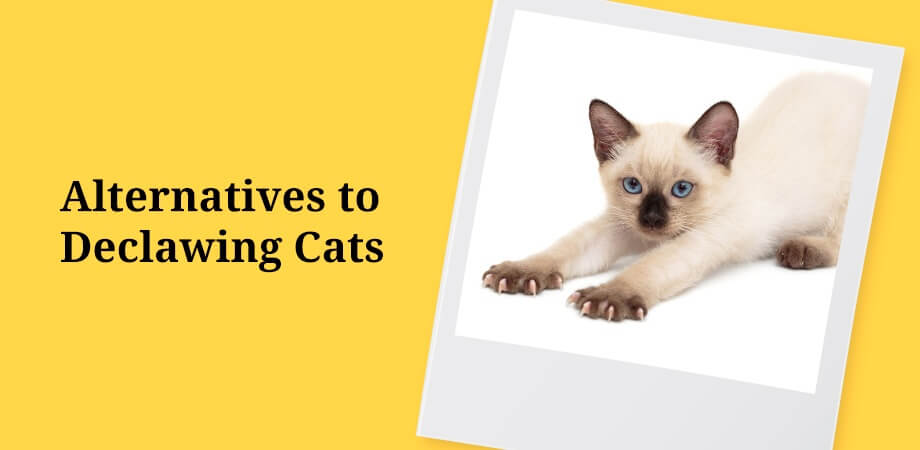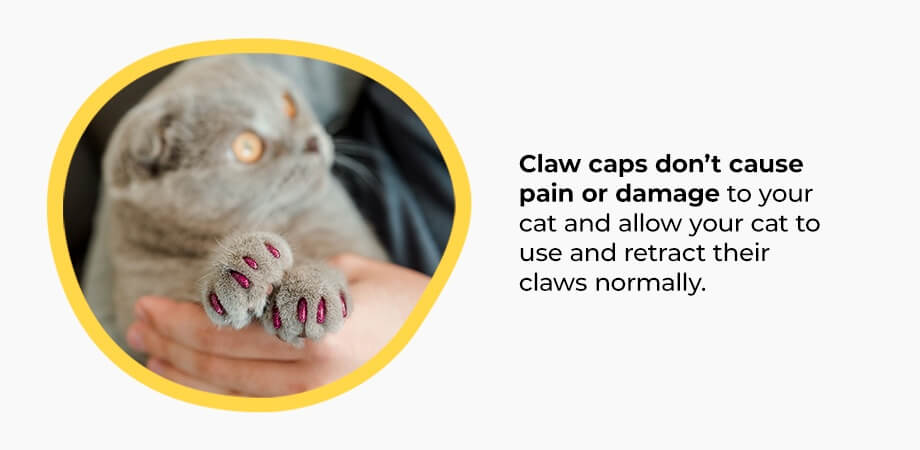
Declawing a cat is a procedure, also known as an onychectomy, which permanently removes the cat’s claws and part of the bones in the toes as well. Most animal experts strongly advise against the process, and some municipalities have even banned declawing.
There are plenty of reasons why you shouldn’t declaw a cat:
- Cats need claws for normal movement and everyday activities like playing and climbing.
- Declawing may cause abnormal bone growth.
- Cats may experience distress after being declawed.
- The process is equivalent to removing a person’s fingers in terms of impacting quality of life.
- Cats can experience pain after declawing.
- It’s a serious procedure with potentially dangerous complications.
- Some declawed felines may have trouble using the litter box or develop aggression and biting tendencies.
What Can I Do Instead Of Declawing My Cat?
While you ideally shouldn’t declaw your cat, it doesn’t mean you need to accept problem scratching behaviors. You can do several things to live comfortably with your kitty and their claws.
1. Scratching Posts
Scratching is normal cat behavior. You can redirect this behavior so it doesn’t impact your furniture. Scratching posts give your furry friend a chance to get a good scratch without bothering you or your belongings.
Test posts with different materials, including cardboard, sisal, wood and other materials. Consider scratching posts that allow your cat to scratch upwards and ones that lie flat or at an angle. The placement of a scratching post also matters. Try a few different areas in your home. If your feline family member likes to scratch a specific spot in the house, put a scratching post there to find the right fit.
2. Claw Caps

When applied properly by a veterinarian, claw caps fit over your cat’s claws and prevent scratches to your and your belongings. Claw caps don’t cause pain or damage to your cat and allow your cat to use and retract their claws normally. Speak to a veterinarian about whether claw caps are a good option for your pet.
3. Routine Trimming
Nail trimming protects your cat’s health by ensuring claws don’t get excessively long. Trimmed claws are less harmful to curtains, furniture and people! If your feline doesn’t love the trimming process, talk to your vet to get some tips. Check out a local groomer, like The Sarasota Dog Salon in Sarasota, if you need professional help.
4. Scents
Your cat’s nose is powerful, and you can use this to your advantage. Try applying catnip to scratching pads and posts to encourage your four-legged friend to scratch there. Cats love catnip, so its presence encourages them to hang out at the scratching post of your choice.
You can also apply cat pheromones to anything your cat scratches. Clean the area and then apply the pheromone daily. This scent can calm your cat. If your cat is anxious, you can buy diffusers that fill your home with synthetic facial pheromones, reducing stress and problem scratching behavior.
Contact University Animal Clinic
If your cat shows signs of problem scratching and you’re having trouble controlling the issue, contact University Animal Clinic with your questions about declawing alternatives. We’re an accredited AAHA hospital with a passion for preventive care. Our goal is to help keep your pet healthy with the highest medical quality and standards.
At University Animal Clinic, our staff is dedicated to your cat’s health and we go above and beyond to offer the best services for your four-legged family member. Book an appointment so we can review whether there are any medical reasons for the situation.
